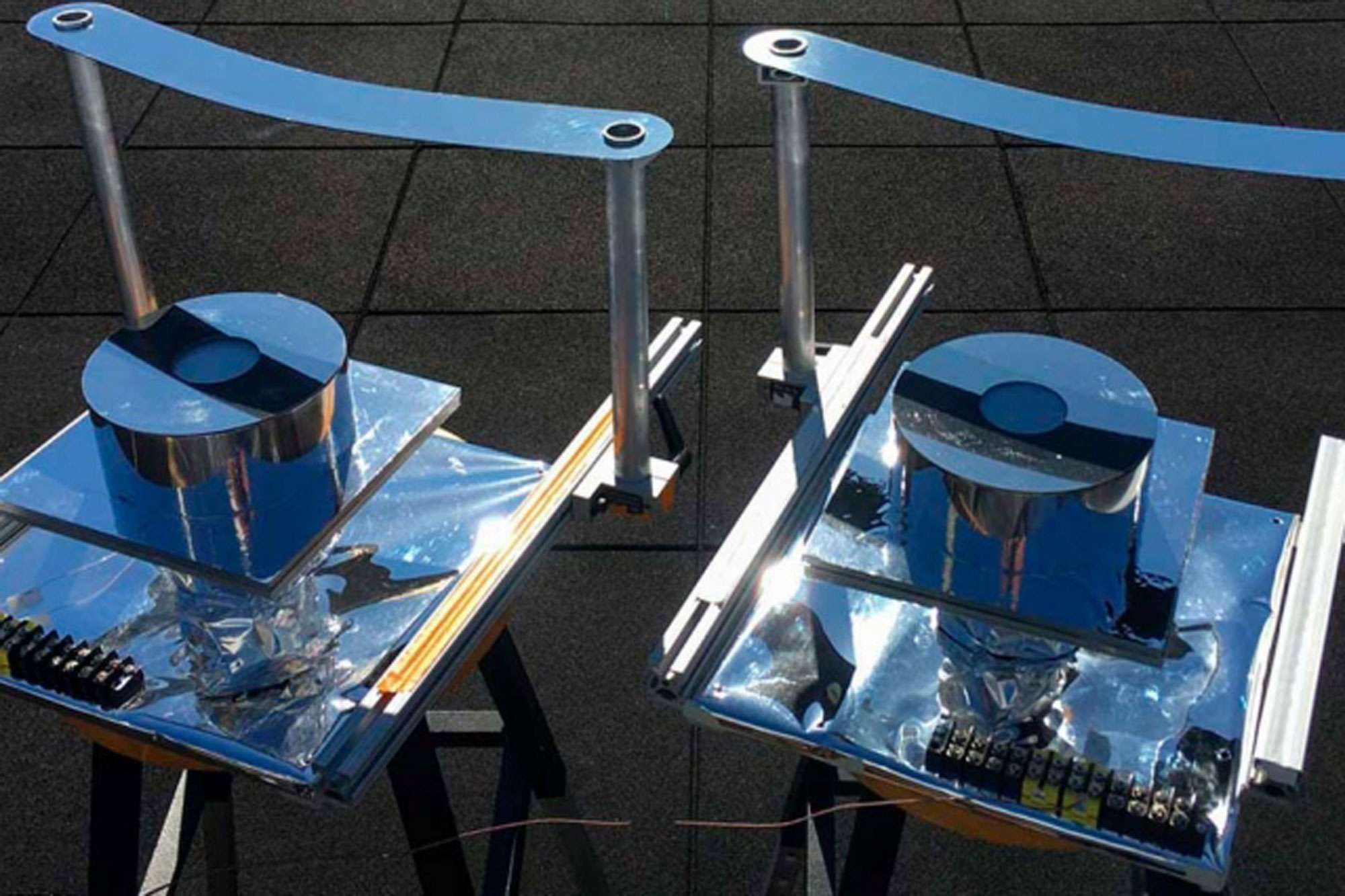How to keep cool without power

MIT researchers have devised a new way of providing cooling on a hot, sunny day, using inexpensive materials and no fossil-fuel-generated power. The passive system, which could be used to supplement other cooling systems to preserve food and medications in off-grid locations, makes use of a high-tech version of a parasol.
The system allows emission of heat in the mid-infrared range of light, which can pass straight out through the atmosphere and radiate into the cold of outer space, punching right through the gases that act like a greenhouse. Developed by research scientist Bikram Bhatia, professor of mechanical engineering Evelyn Wang ’00, and others, it could, in theory, cool things down as much as 40 °C (72 °F) below the ambient temperature in some dry locations, the researchers say. So far, in their initial proof-of-concept testing, they have achieved a cooling of 6 °C (about 11 °F).
Others have attempted to design passive cooling systems that radiate heat in the form of mid-infrared wavelengths of light, which is how most natural objects cool off, but these systems have been based on complex, expensive engineered photonic devices.
It turns out that a similar effect can be achieved with a simple device built from inexpensive plastic film, polished aluminum, white paint, and insulation. A narrow strip of metal, placed at just the right angle to cover the sun’s path across the sky without any active tracking, prevents the heating effect of direct sunlight from overwhelming the radiative cooling. While simple radiative cooling systems have been used since ancient times to achieve nighttime cooling, the sun’s heat has prevented them from being usable in the daytime.
“This would be useful for refrigeration applications, such as food storage or vaccines,” Wang says.
Keep Reading
Most Popular
Large language models can do jaw-dropping things. But nobody knows exactly why.
And that's a problem. Figuring it out is one of the biggest scientific puzzles of our time and a crucial step towards controlling more powerful future models.
How scientists traced a mysterious covid case back to six toilets
When wastewater surveillance turns into a hunt for a single infected individual, the ethics get tricky.
The problem with plug-in hybrids? Their drivers.
Plug-in hybrids are often sold as a transition to EVs, but new data from Europe shows we’re still underestimating the emissions they produce.
Stay connected
Get the latest updates from
MIT Technology Review
Discover special offers, top stories, upcoming events, and more.